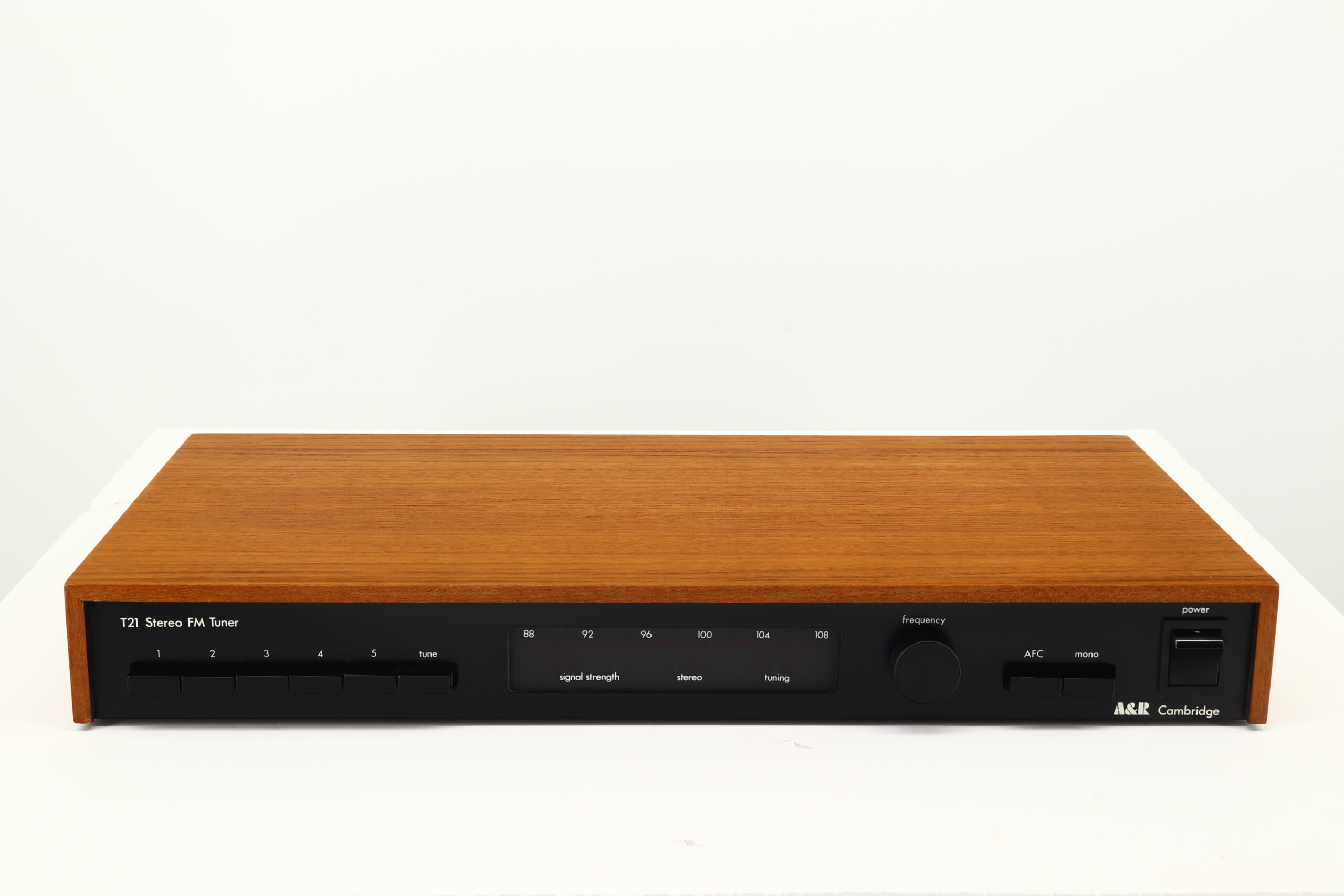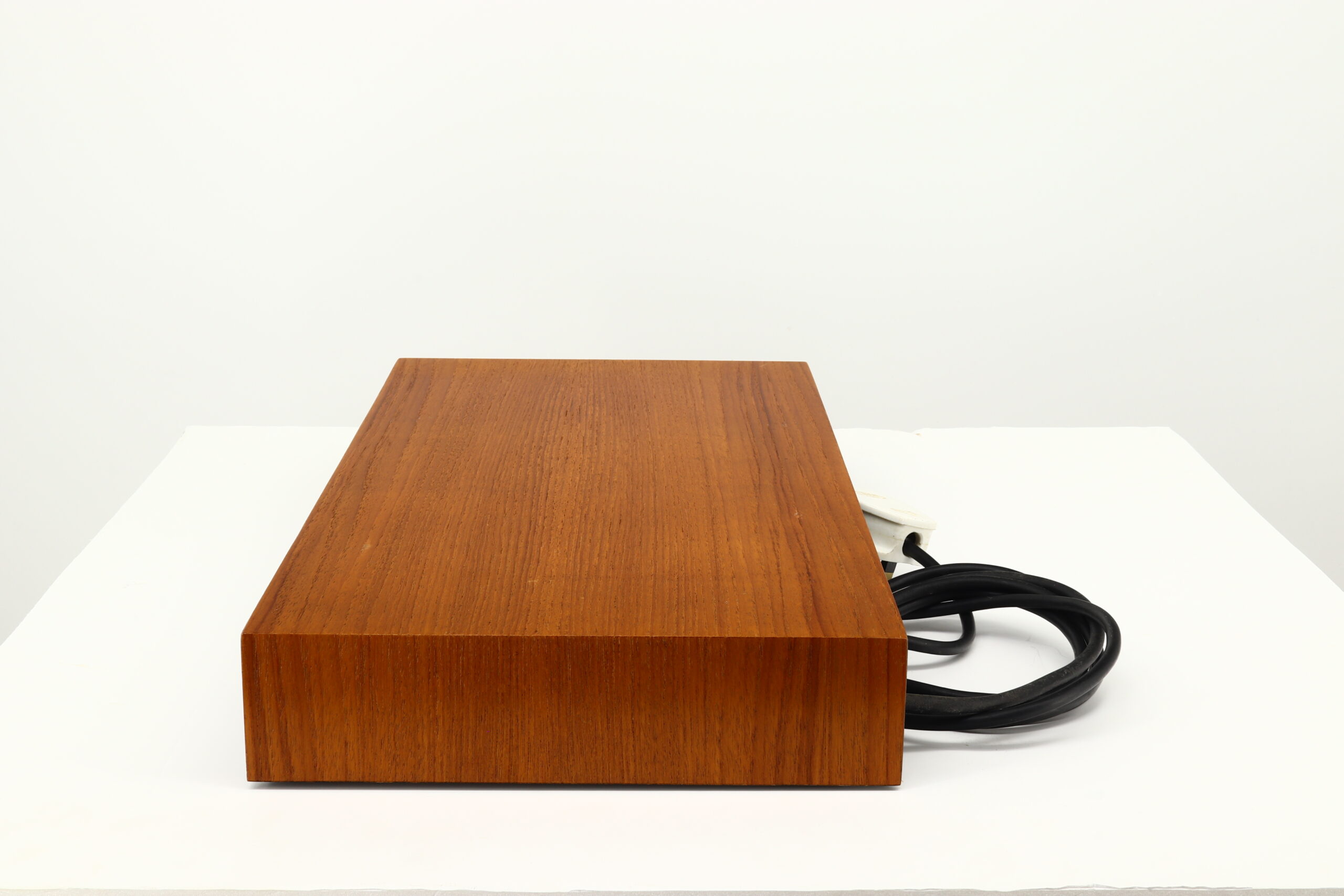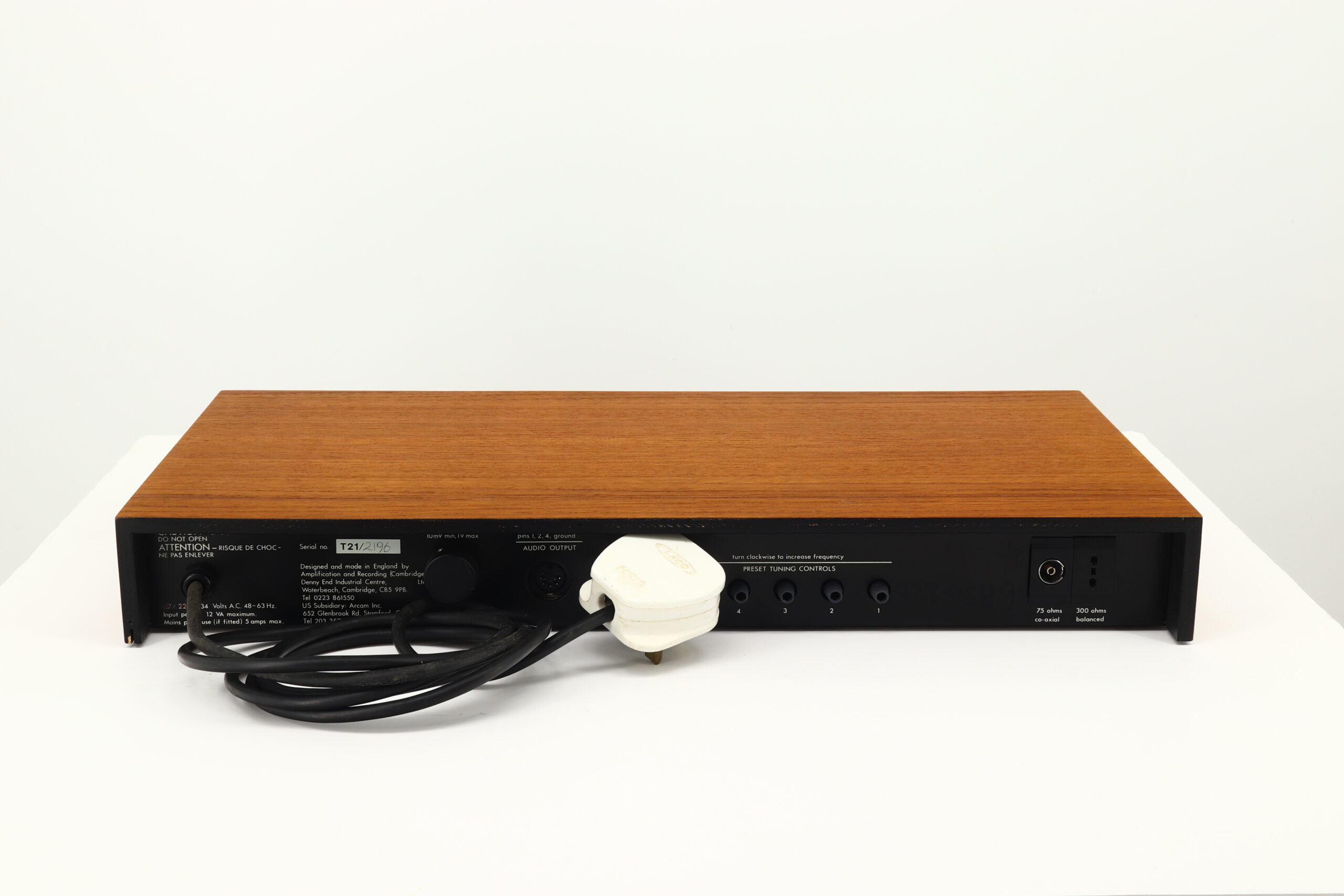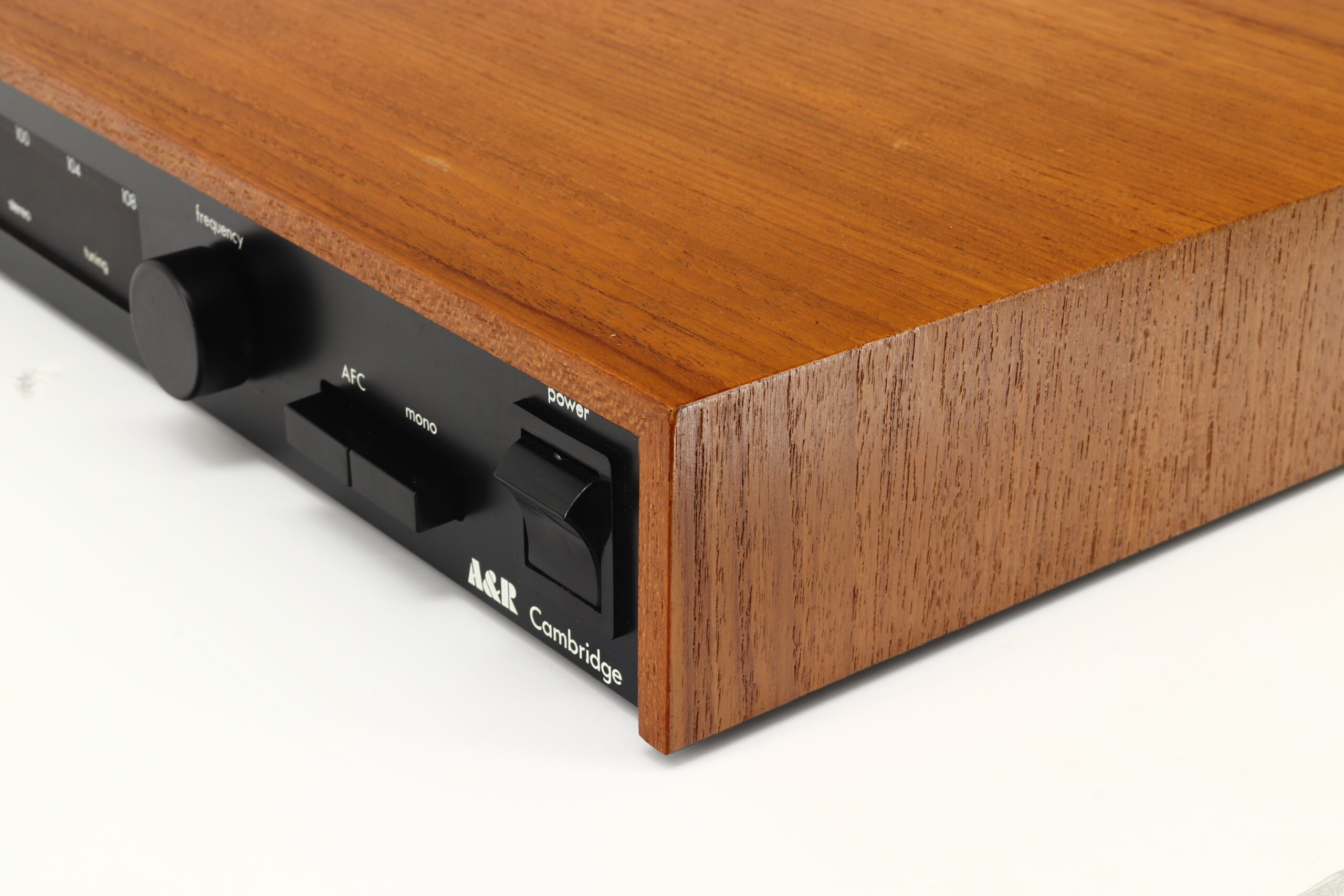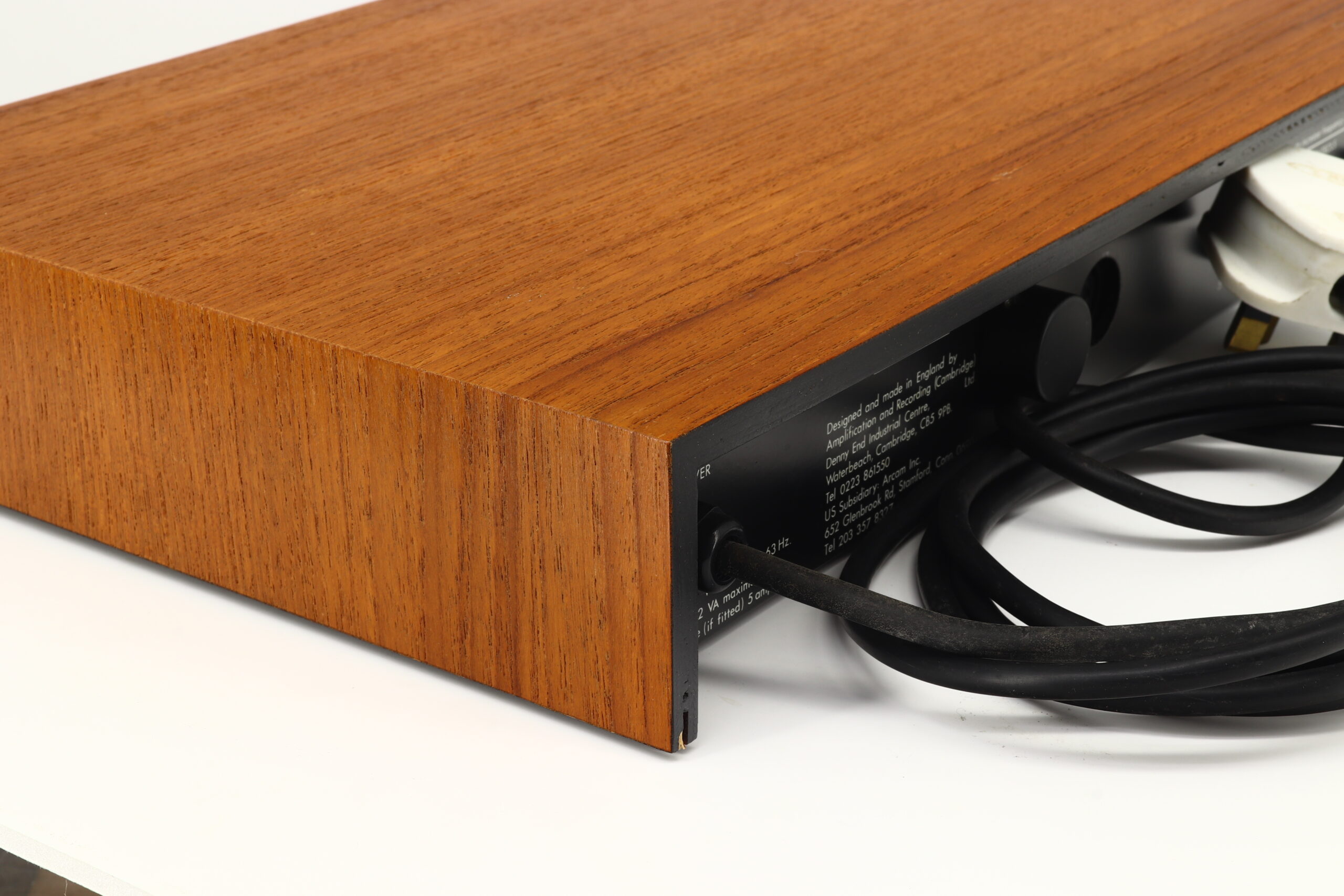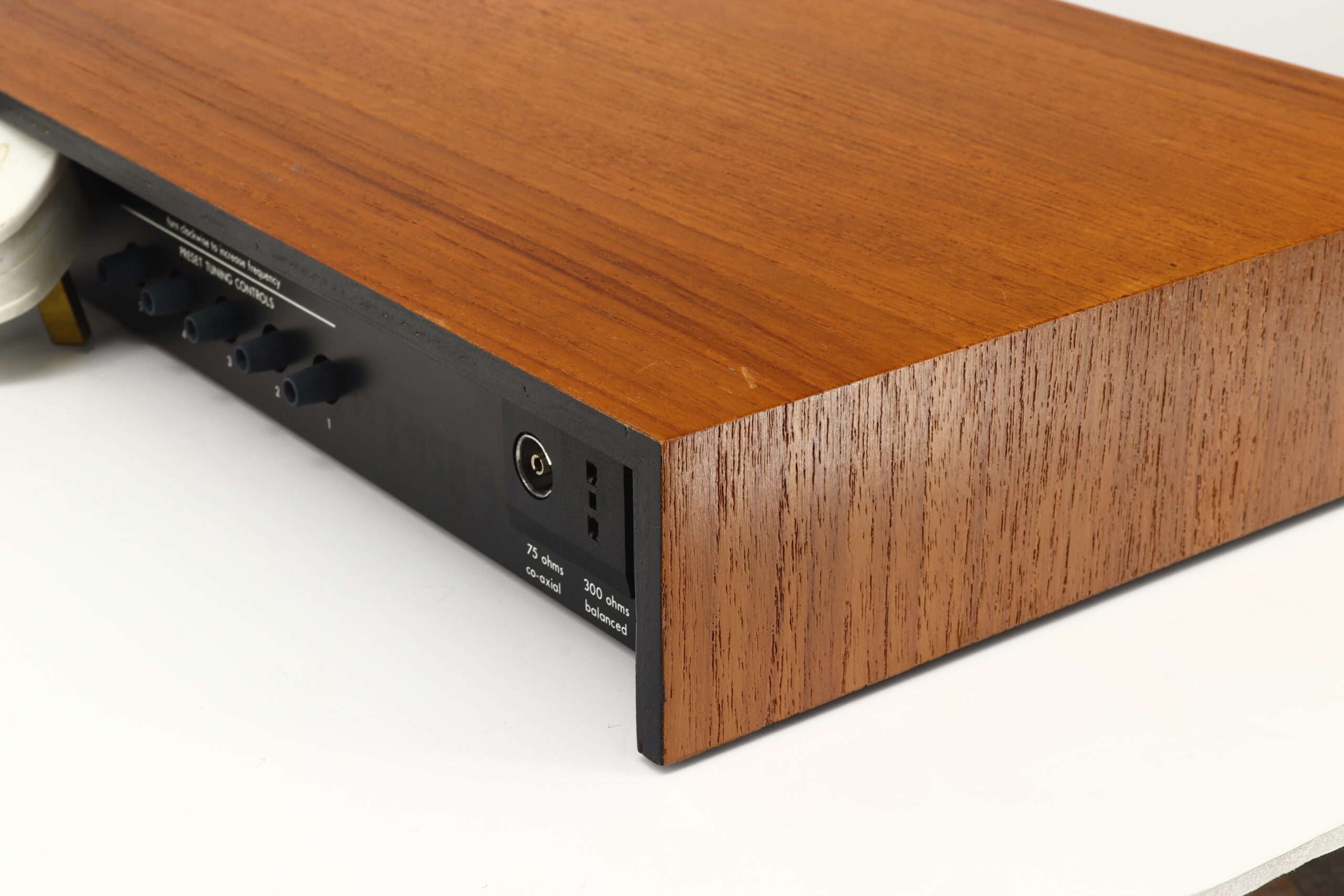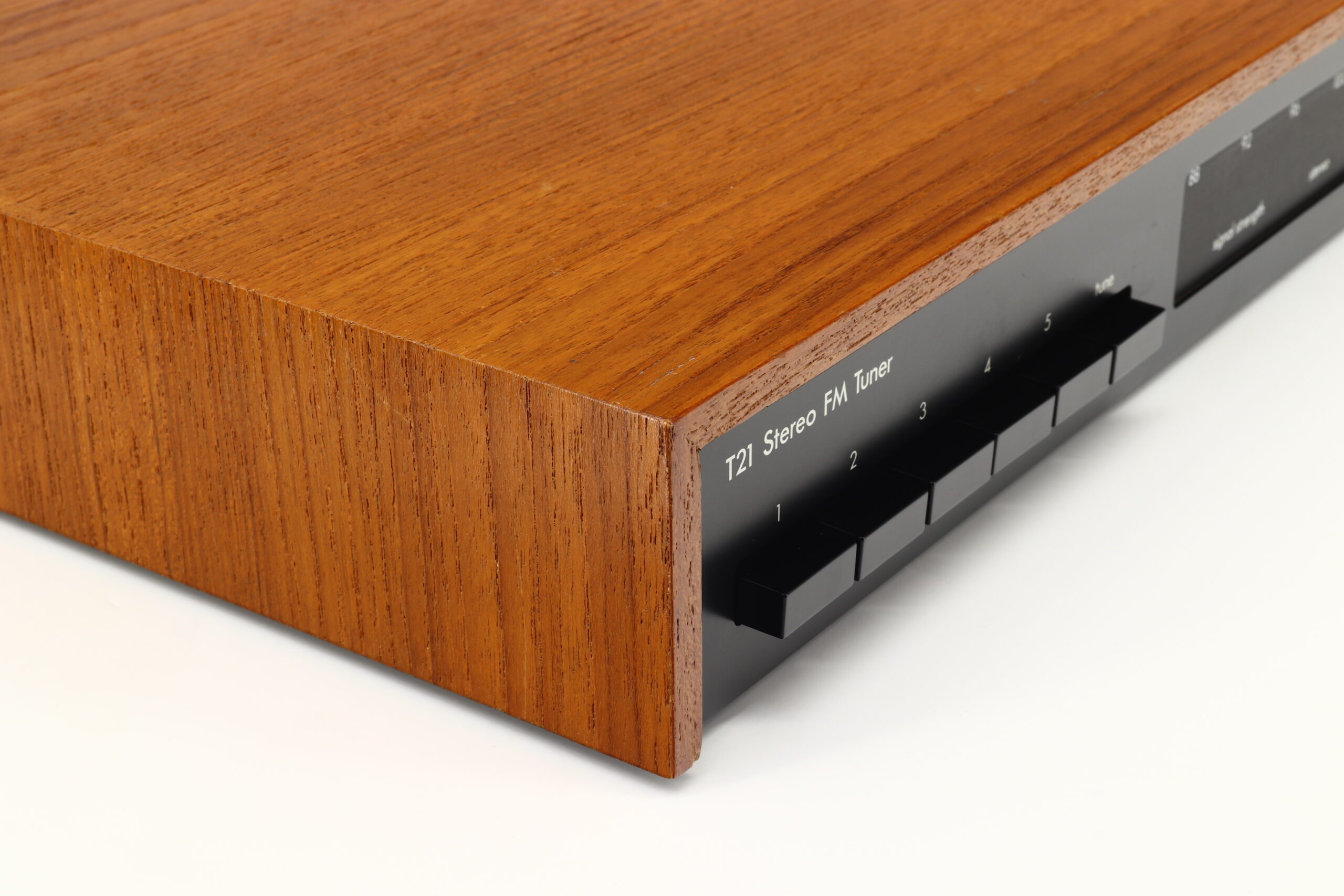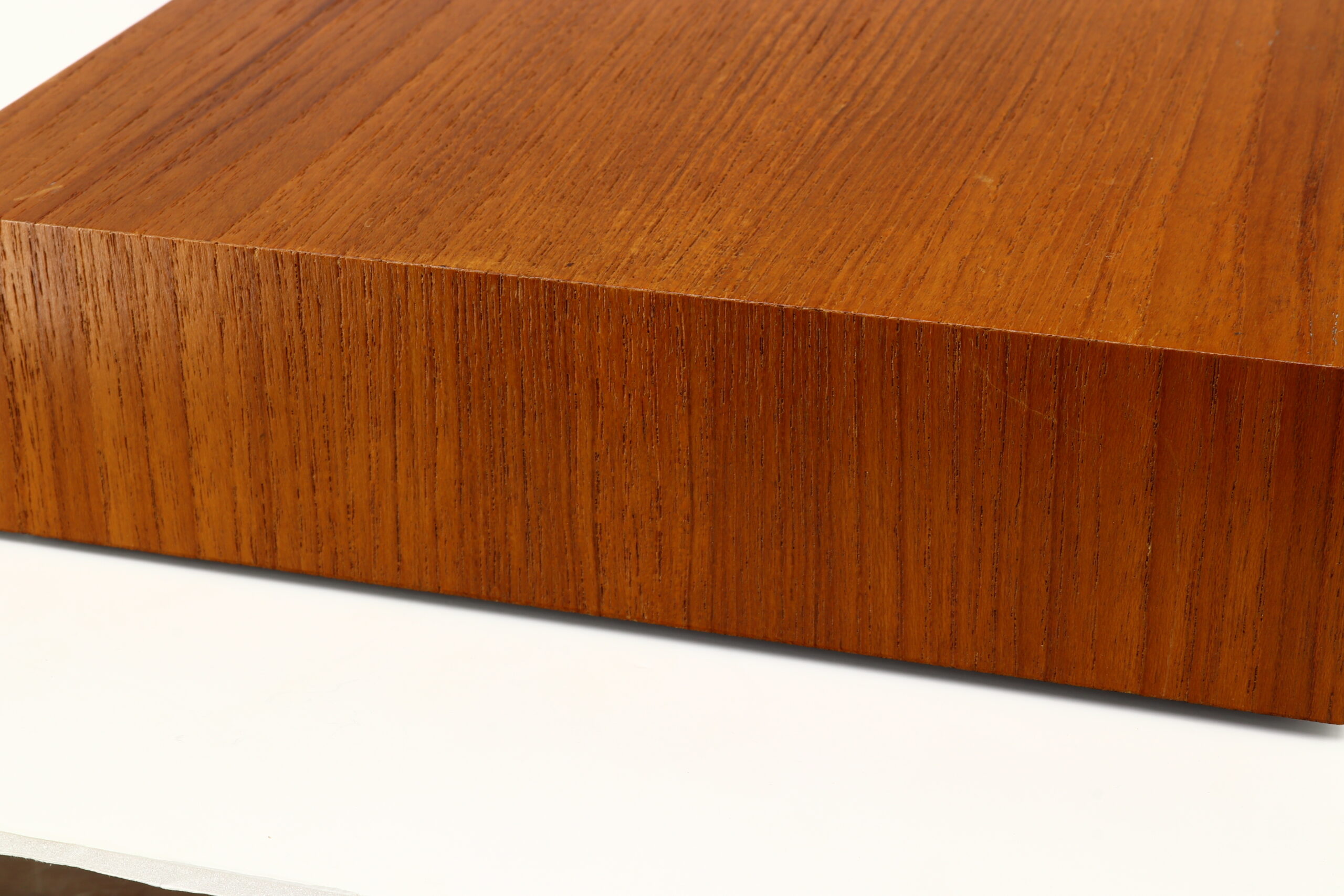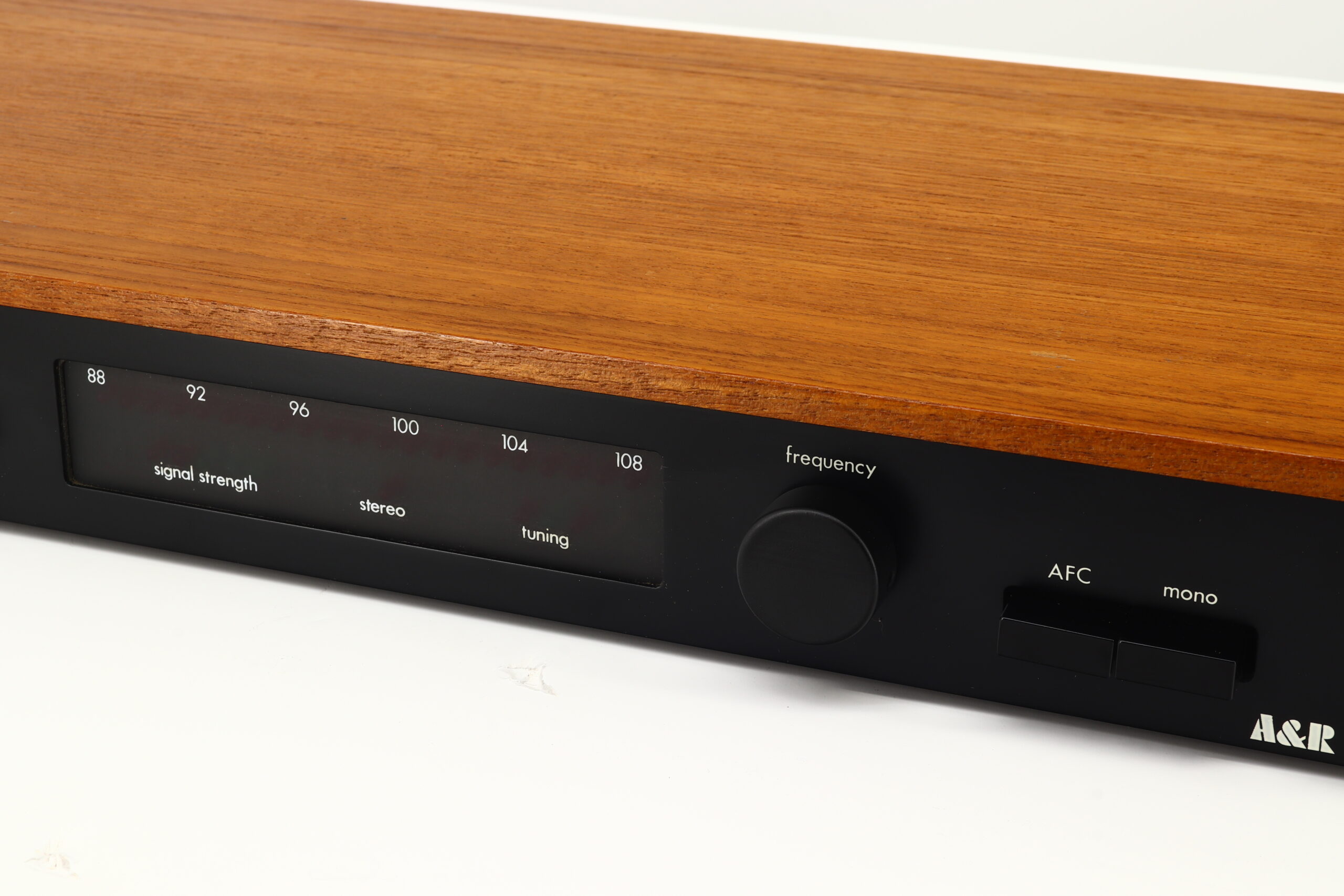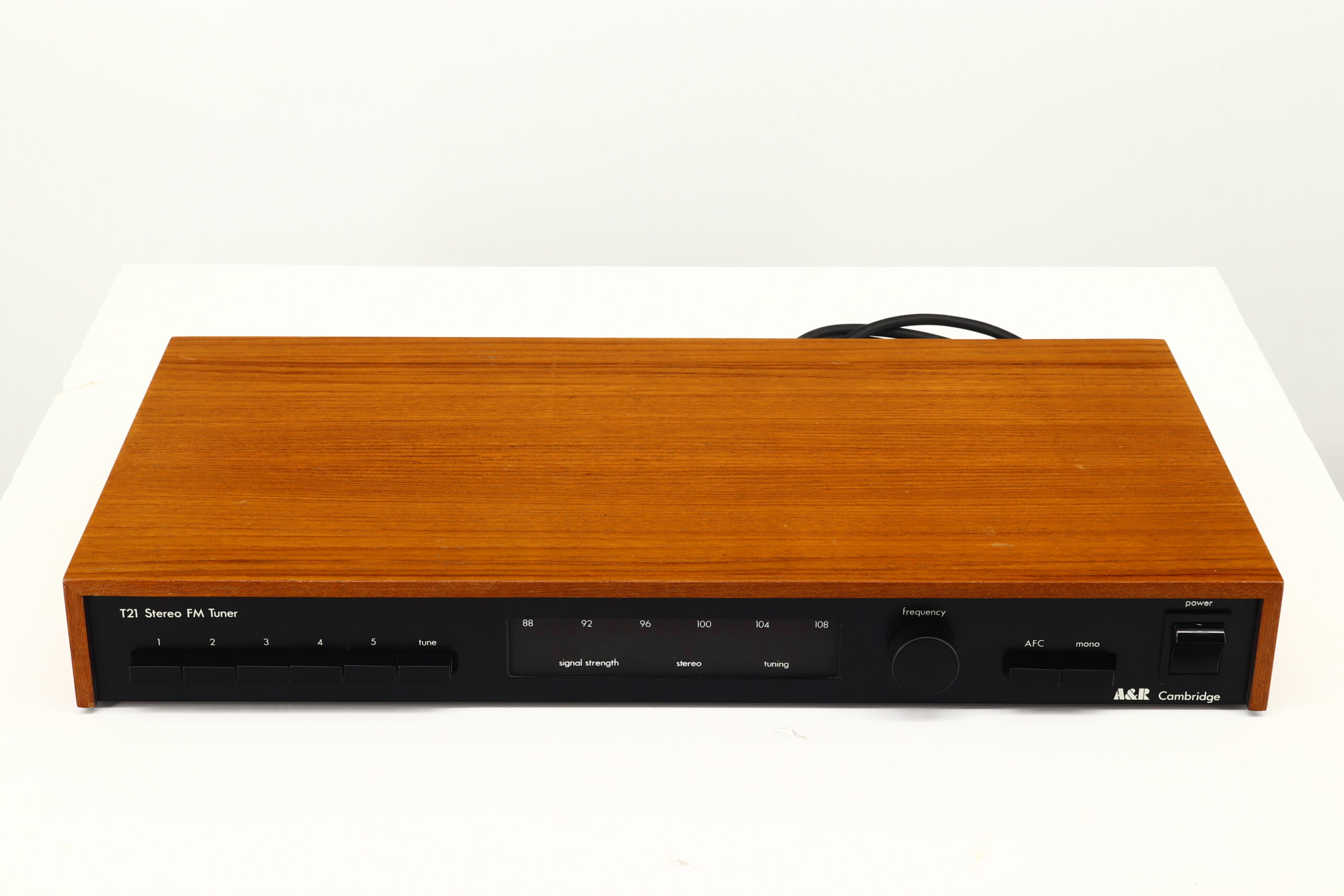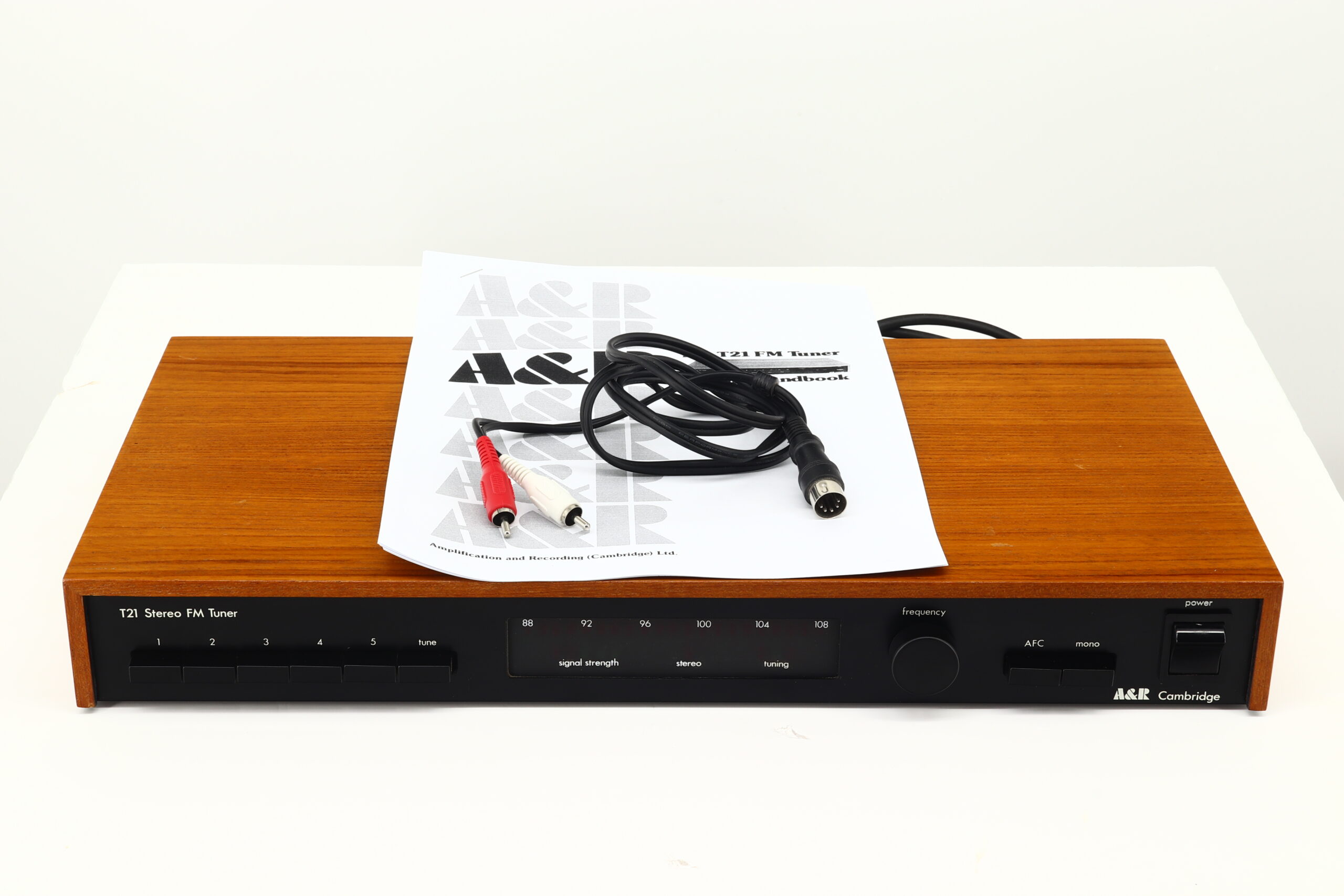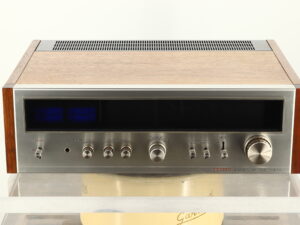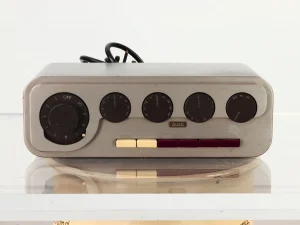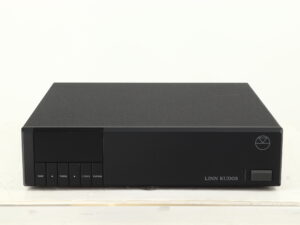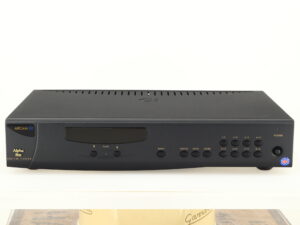Your basket is currently empty!
A&R Cambridge T21 FM/AM Tuner – Teak
£95.00
Manufacturer : A&R Cambridge
Model : T21
Serial Number : T21/2196
Packaging : N/A
Accessories Included : DIN-Phono Cable / Manual
Price When New :
1 in stock
Description
For its age this simple tuner from British hi-fi specialists Amplification & Recording Cambridge (or Arcam, as they are known today) is in very good condition. The company have been around since 1976 when they released their first amplifier, with many still in use today. Our example of the T21 Tuner is fully working, will come professionally packaged with its manual and is backed by our normal three month warranty.
From A & R Cambridge…
The qualities of the A60 amplifier series demand a tuner that is a complete partner. The T21is that partner, an ideal match in looks, performance and price.
With no moving pointer tuning scale the T21 has instead a row of light emitting diodes (LEDs) spaced at precise 1 MHz intervals. These light up to produce an accurate and unusual tuning indicator. Which LED on the scale lights up depends on the signal frequency to which the tuner is set. As the tuning knob is turned the LED that is on gradually fades out as the next one along the scale fades in. Careful matching of the components at the production stages ensures that it is possible for this scale to be used to a precision of typically 0.2 MHz.
The signal strength meter is a row of five LED’s, two red and three green. With the first two red LED’s on, the signal strength is sufficient for good mono reception; the stereo signal to noise ratio is adequate when the first green one lights up; the strongest and best stereo signal is indicated when all five LED’s are on.
The tuning indicator is a further row of three LED’s: red-green-red. The two red LED’s on either side indicate the frequency direction of any tuning error; correct tuning is shown when only the green one is on.
Also included in the tuning window is a single red LED as a stereo beacon.
Tuning can be carried out by either the manual tuning control or one of the five preset push buttons. Full station search with continuously variable tuning is provided by the rotary knob which has a pleasant and useful flywheel action. For the more frequently used stations each of the five buttons can be individually preset with the controls at the rear of the tuner. A mute facility is provided to remove background noise between the stations. To ensure that a station, once selected, remains accurately tuned in, an AFC (automatic frequency control) is fitted.
The T21 can be used with any amplifier, including, of course. the A60 itself. A level control knob on the rear of the tuner allows unwelcome variation in the output volume between the tuner and, say, a record deck to be equalised. Thus only minimal adjustment of the amplifier’s volume control is ever needed. Both 75 ohm and 300 ohm balanced aerial sockets are provided, together with their matching plugs, allowing easy connection to all standard FM aerial systems.
Great care has been taken in the design of the sound circuitry of the T21 to produce an unusually flat frequency response over the critical listening bandwidth. A ‘birdie’ filter, fitted before the stereo decoder, considerably reduces the unpleasant whistles (‘birdies’) caused by closely positioned stereo broadcasts. It also compensates for phase errors in previous stages which would otherwise add to distortion and crosstalk. A highly efficient multiplex filter removes the 19 and 38 kHz high frequency tones produced by the stereo decoder circuitry, preventing damage to loudspeakers and interference with the bias oscillator in a tape recorder.
Overall, our design and production standards have been carefully maintained with the T21 tuner. We believe it is the perfect complement to our range of high performance, value-for-money sound equipment.
Specifications:
Tuning Scale: 21 matched red LED’s in steps of 1 MHz a gradual changeover in light intensity between adjacent LED’s allows frequency readings of typically 0.2 MHz to be achieved. Range of tuner and scale 87.5 – 108.5 MHz
Signal Strength Meter: Bar graph scale using 5 LED’s, 2 red and 3 green
Tuning Meter: 3 LED’s, red-green-red
Stereo Beacon: Single red LED
Aerial Inputs: Sockets for 75 and 300 Ω aerials
Sensitivity: (IHF) typically 1.3µV, – 3dB limiting point typically 1.0 µV
Capture Ratio: 1.5 dB
Alternate Channel Selectivity: better than 60 dB
Repeat Spot Suppression: better than 80 dB
IF Rejection: better than 80 dB
AM Suppression better than 50 dB (reference 75 kHz deviation, 30% AM at 400 Hz, aerial signal 10 µV – 10 mV)
Ultimate Signal-to-Noise Ratio(CCIR/ARM weighted) Mono: better than 70 dB; Stereo: better than 68 dB
Pilot Tone Suppression: better than – 50 dB
Subcarrier Suppression: better than – 40 dB
Distortion (THD) @ 1 kHz: Mono: better than 0.15%, typically 0.08%; Stereo: better than 0.25%, typically 0.15%
Channel Separation: > 40 dB
Frequency Response: 20 Hz – 12 kHz ± 0.5 dB. typically – 3 dB at 15 kHz
Channel Balance: within ± 1 dB
Output Level: continuously variable 10 mV – 1V at full deviation
Output Impedance: < 1 kΩ
Recommended Load: > 10 kΩ
Power Supply: 200 – 250V AC, 6 VA maximum
Dimensions: 450 (W) x 240 (D) x 60 (H) mm
Weight: 3.3 kg

